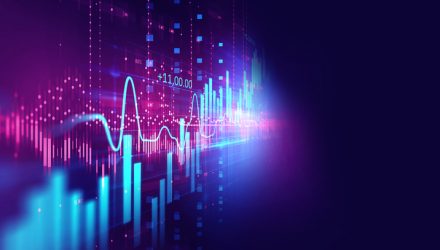For AGFiQ, there’s plenty of alternative approaches to generating definite income in the current market, which is their main focus for the remainder of the year.
Speaking to ETF Trends recently, AGF Investments LLC CEO Bill Carey spoke about the AGFiQ US Market Neutral Anti-Beta Fund (BTAL), which is designed to provide equity market offside participation while managing some of the volatility and drawdowns.
BTAL tracks an equal-weighted index that takes long positions in low beta US stocks offset by short positions in high beta US stocks.
It provides consistent exposure to the anti-beta factor by investing in the underlying index which reconstitutes and rebalances monthly in equal dollar amounts in equally weighted long low beta positions and equally weighted short high beta positions within each sector.
This allows AGFiQ to dial up or down the core equity exposure or the hedge built into the portfolio. So, if volatility and market risk is low, there’s less of a hedge built into the product, allowing for that upside participation as market volatility increases, or uncertainty becomes present. This creates the ability to dial up the exposure to BTAL within the ETF, which helps to minimize some of the volatility and drawback.
The Solution Of BTAL
This is an interesting solution, with many discussions starting with the solution of BTAL. From a sophistication standpoint, some investors can understand others are handling that overlay of hedge for them. That helps with products like AGFiQ Dynamic Hedged US Equity ETF (USHG), for example, as the solution shows a solution for that drawdown risk that’s in the market.
USHG provides exposure to a diversified portfolio of U.S. equities while seeking to provide long-term capital appreciation with lower volatility using embedded downside risk management to seek to protect capital. It’s top five holdings are BTAL (18.77%), Health Care Select SPDR Fund (14.92%), Technology Select Sector SPDR Fund (12.85%), Financial Select Sector SPDR Fund (12.7%) and the Industrial Select Sector SPDR Fund (11.71%).
“I think that’s a really important distinction between BTAL’s standalone vehicle, which we spent a lot of time on in America, as that vehicle is a portfolio construction tool where the discretion will be on someone managing a portfolio to describe what to integrate that in,” Carey said. “The distinction then between the ETF that we manage that embeds BTAL is that we can manage that risk mitigation for an advisor or investor, and it can be used as a core equity holding versus a tilt or risk-off solution by just integrating BTAL.”
This all shows a breadth of offering that meets various investor needs or certifications. For more information on BTAL, visit https://www.agf.com/us/products/btal/index.jsp. For more information on USHG, visit https://www.agf.com/us/products/ushg/index.jsp.
For more market trends, visit ETF Trends.








